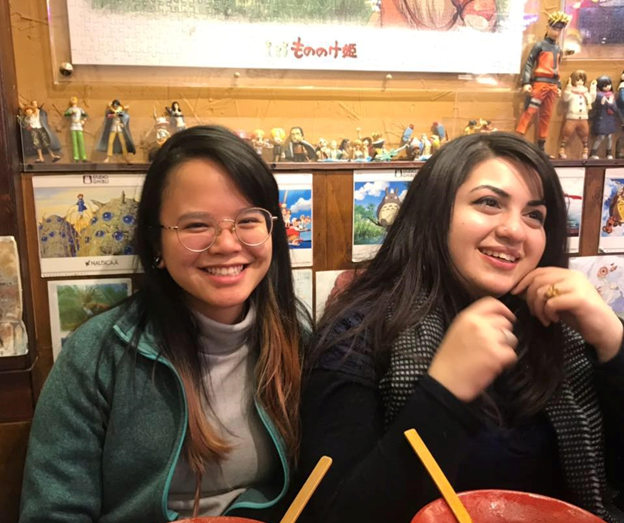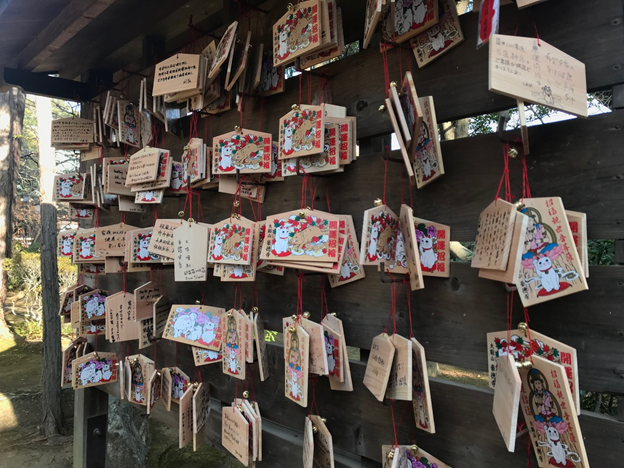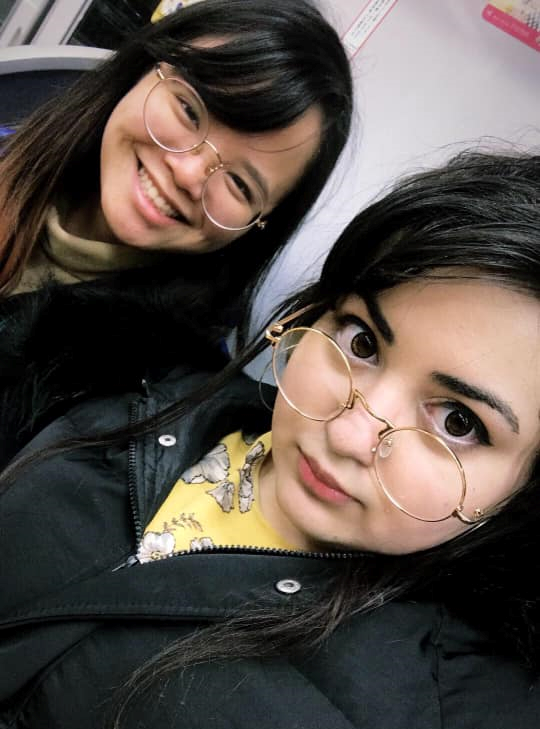By Pel Doski, ETA 2018–19
There are times we unfortunately give up on a once shiny goal. Sometimes it stems from a dramatic breaking point, but other times it has origins in learned helplessness. It was the latter that led me to leaving my Japanese studies in the backroom of one of the many homes I moved out of. In other words, I nearly abandoned my studies. I was afraid I would be completely illiterate no matter how long I studied, so I learned 한글, the Korean alphabet, quickly and moved forward with studying Korean instead.
This winter break, with one of my closest friends, Mailé, I found myself in Japan for 10 days. I booked tickets last minute and packed haphazardly, not fully aware of exactly what I was getting myself into. I was afraid that I would be an alien in a place I once cared so deeply about. I was also afraid that I would be frustrated at myself for forgetting all of the language I once knew years ago.

Mailé and I, the day before we left for Japan, eating ramen in a Studio Ghibli themed restaurant in Daegu.
With their kind guidance and patience, Mailé and I traveled through Tokyo. At first I was disappointed in myself. I used a friend as a complete crutch for the first few days and, although I was enjoying the sights, I felt like a completely oblivious tourist. In order to wind down from the excitement of Tokyo, we took a long, yet scenic train ride to 護国寺 (Gotoku-ji). All I really knew at that point was that we were going to a famous Buddhist temple known for cat statues. I had heard the famous “beckoning cat” (maneko or 招き猫) may have originated from a story taking place at this particular temple.
We wove through neighborhoods and alleys by foot until we arrived at a large yet sparse temple surrounded by winter torn trees. Once we arrived we both picked up on a difference in the wintry air. There were hundreds of frozen cat statues waiting for us—each possessing an identical stare. The statues, in conjunction with the slow and calm chanting from the monks, gave an eerie yet serene vibe to the place, but despite this, I never felt uneasy. I felt at peace. There are times in our lives when eerie feelings make us feel apprehensive and want to flee a scene; however, I felt a sense of nostalgia and serenity at this temple.

These are 絵馬 (ema) displayed at a Buddhist temple known as the birthplace of the 招き猫 (the beckoning cat).
In those moments I was able to strip myself of all of the extra lingering feelings that kept souring my mood. With a newfound ability to reflect inward, I forgot about the lingering disappointment in myself for not continuing Japanese studies, and instead forgave myself. I remembered that I met this amazing friend and came to this introspective place.
Mailé and I observed Buddhist style prayer and we compared it to what we learned when we went to 해동 용궁사 (Haedong Yonggungsa) in Busan. Buddhism at its core is the same across nations and languages, but between South Korea and Japan there are slightly different methods of praying. In Korea, people give a monetary offering before kneeling and prostrate before raising their forearms and standing up again. They repeated this three times for each Buddha present (usually there are three Buddhas). In Japan, people remained standing after offering money. They bowed their heads and rang a bell before praying, clapping, and then bowing. It was very similar to what we observed at Shinto shrines (places of worship for members of the more popular Japanese religion Shintoism). After quickly catching onto the pattern and giving our own offerings, we prayed for the New Year, our grant year, and the distant years to come. I was then ready to jump back into our Japanese travels, with a clearer mind and a less burdened conscience. Finally, after all these years, I will return to my Japanese studies.




